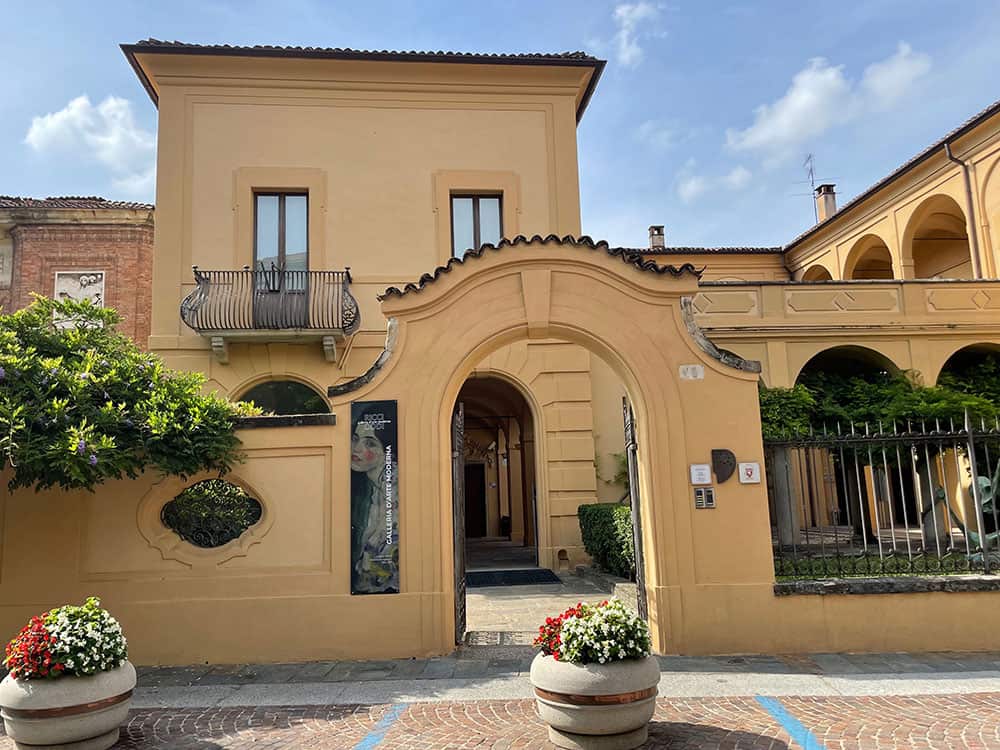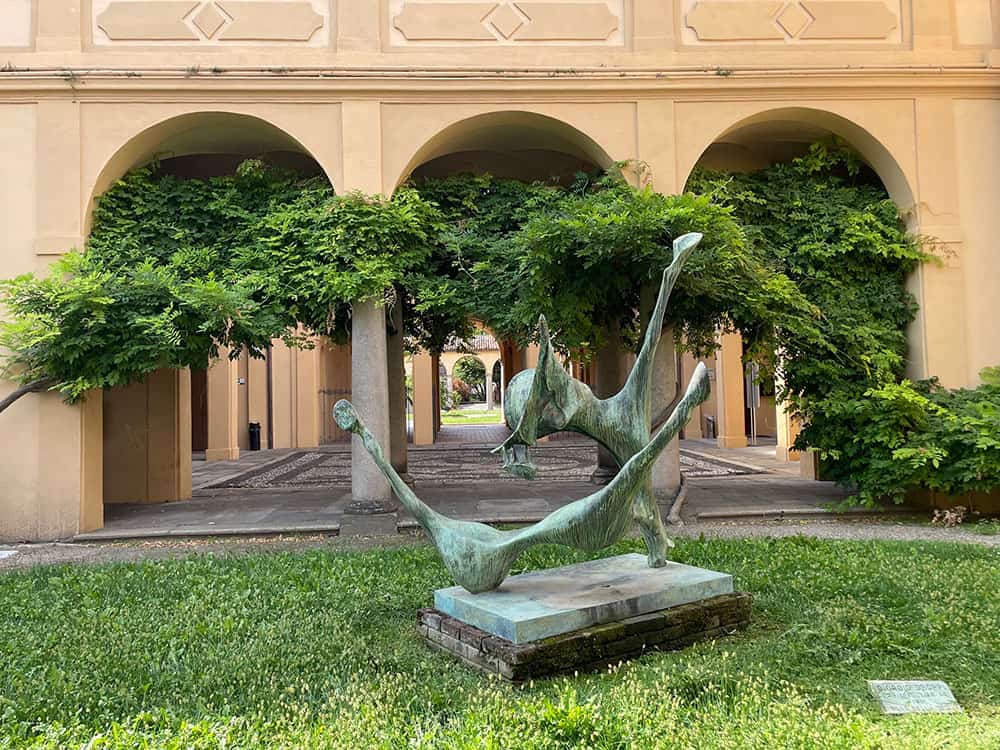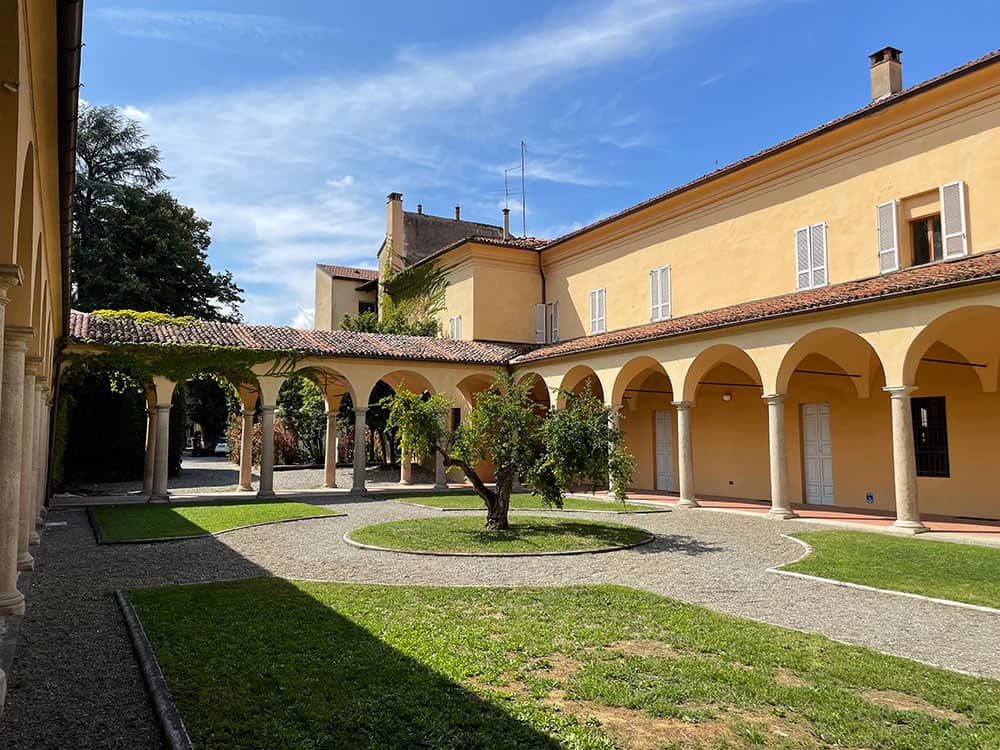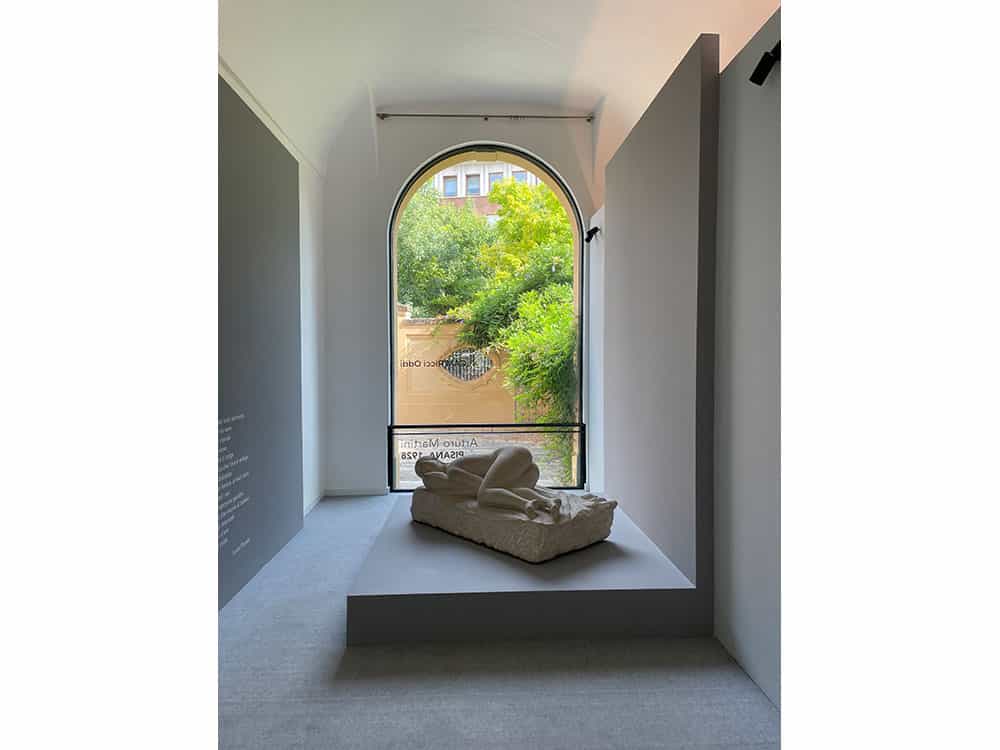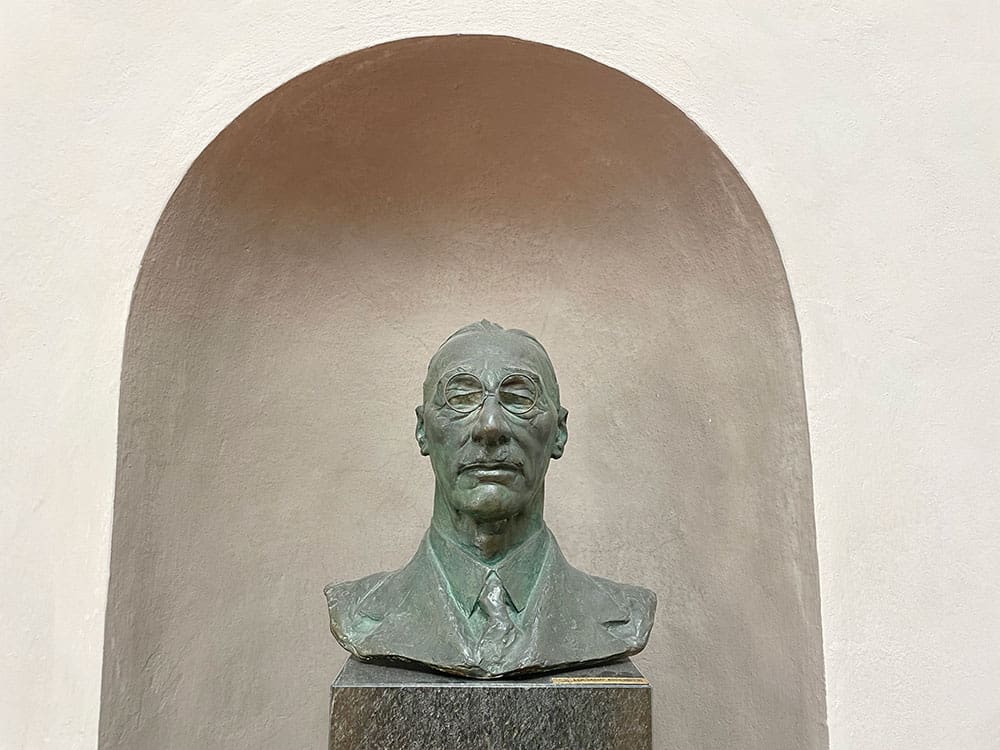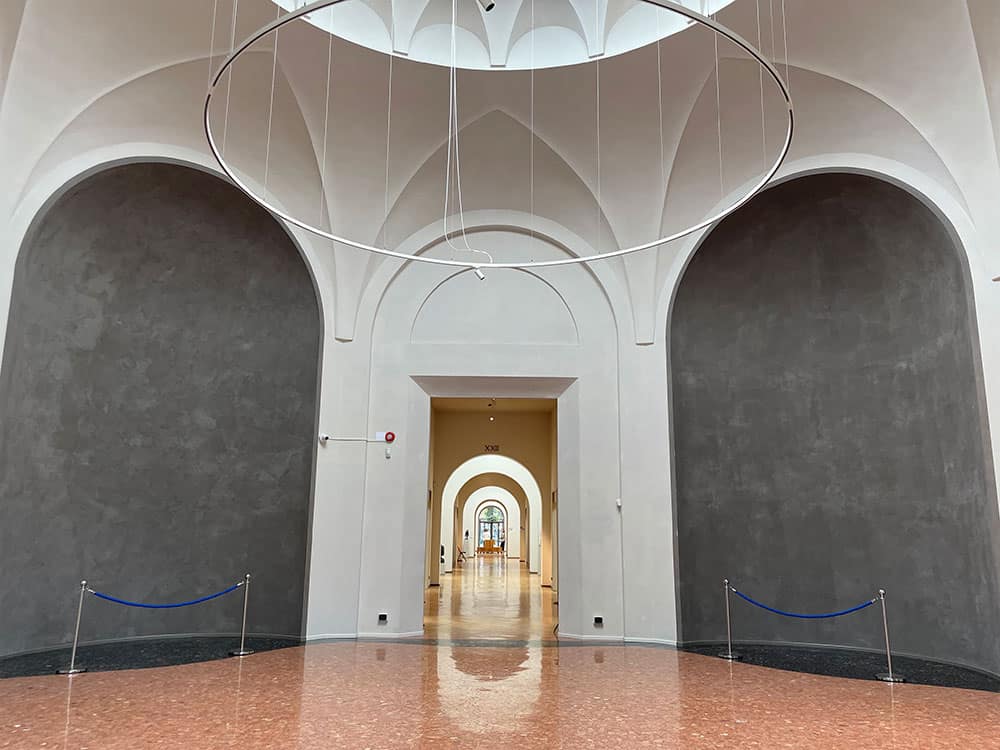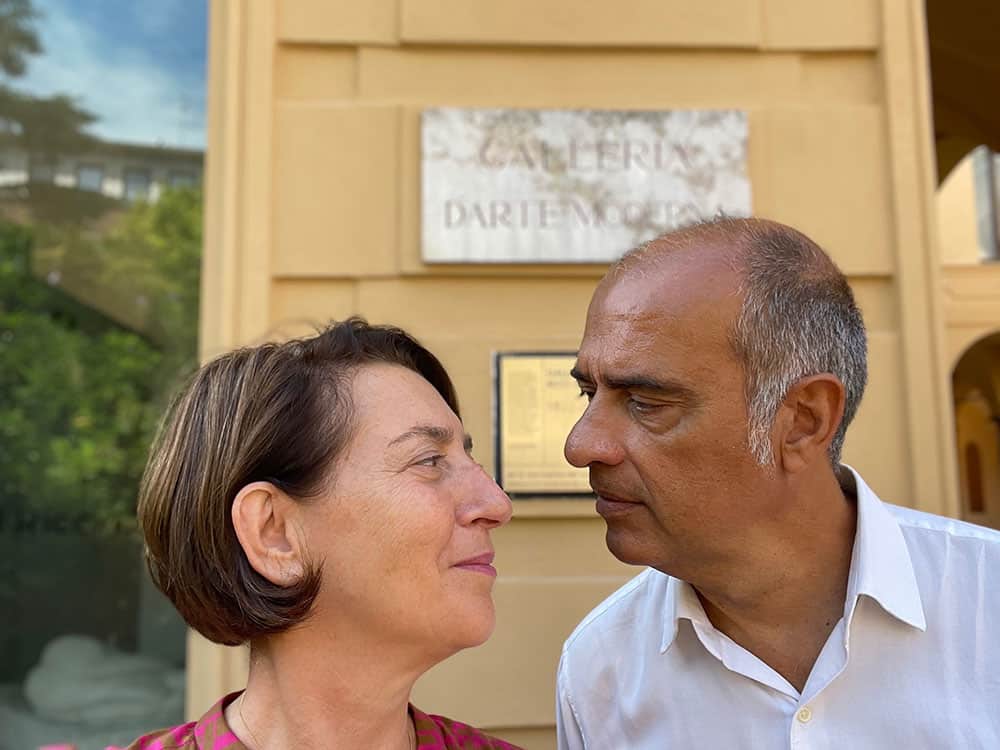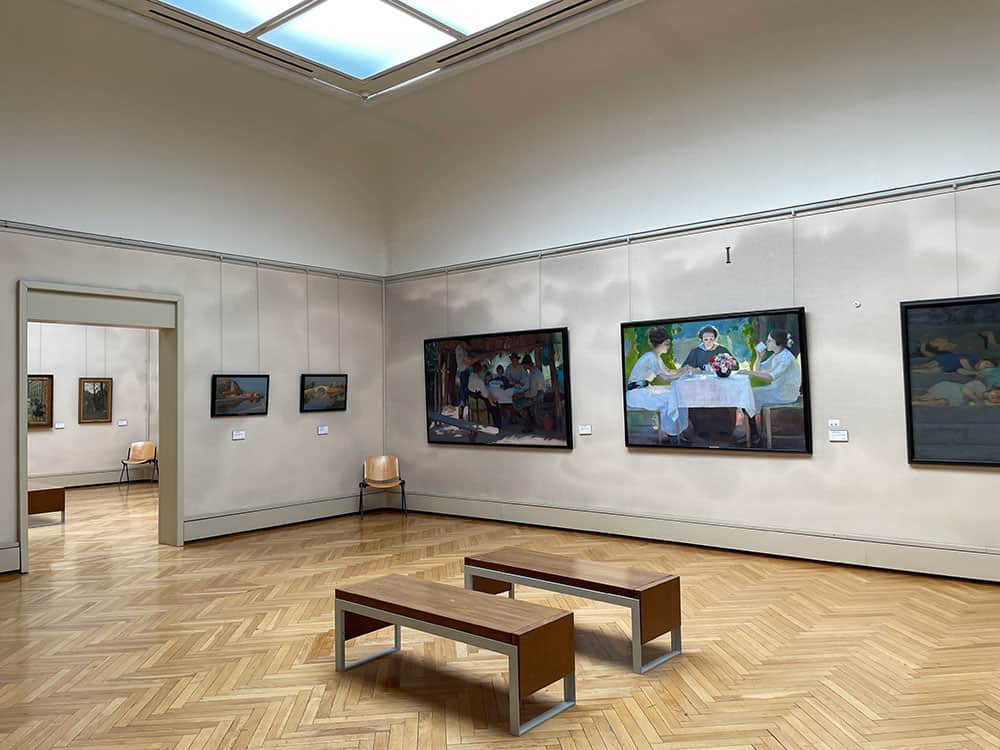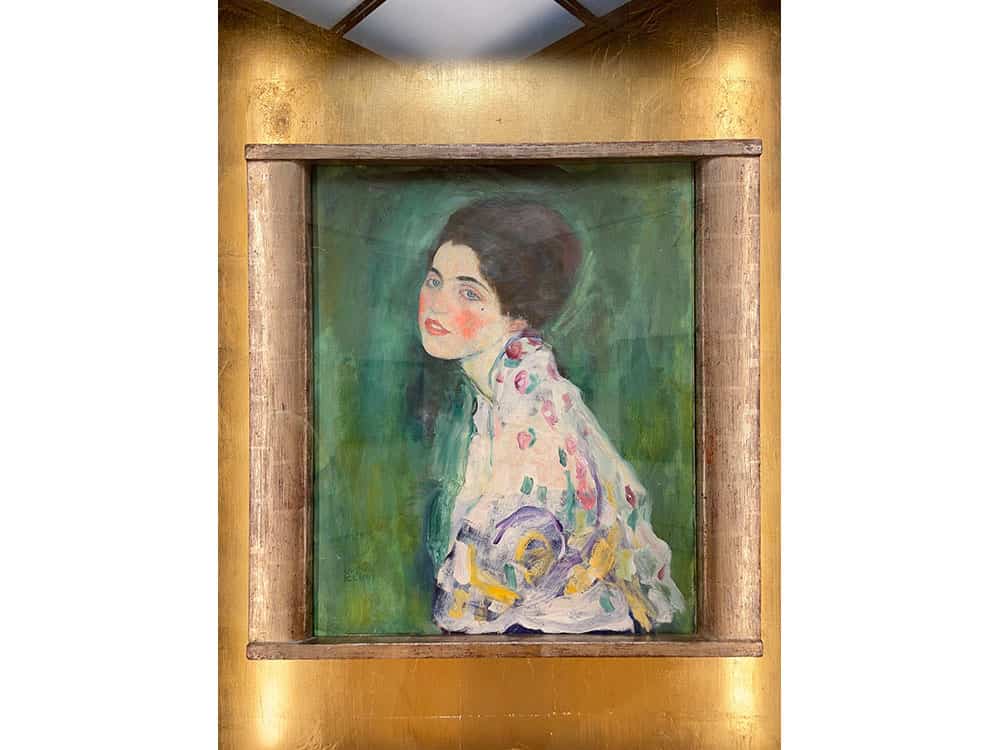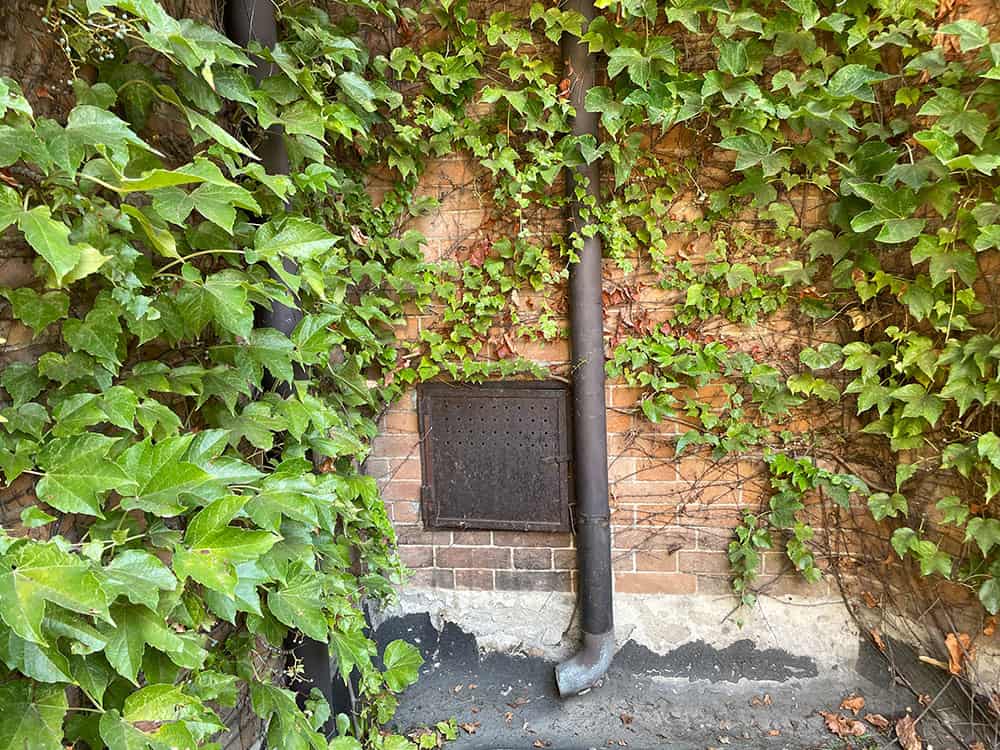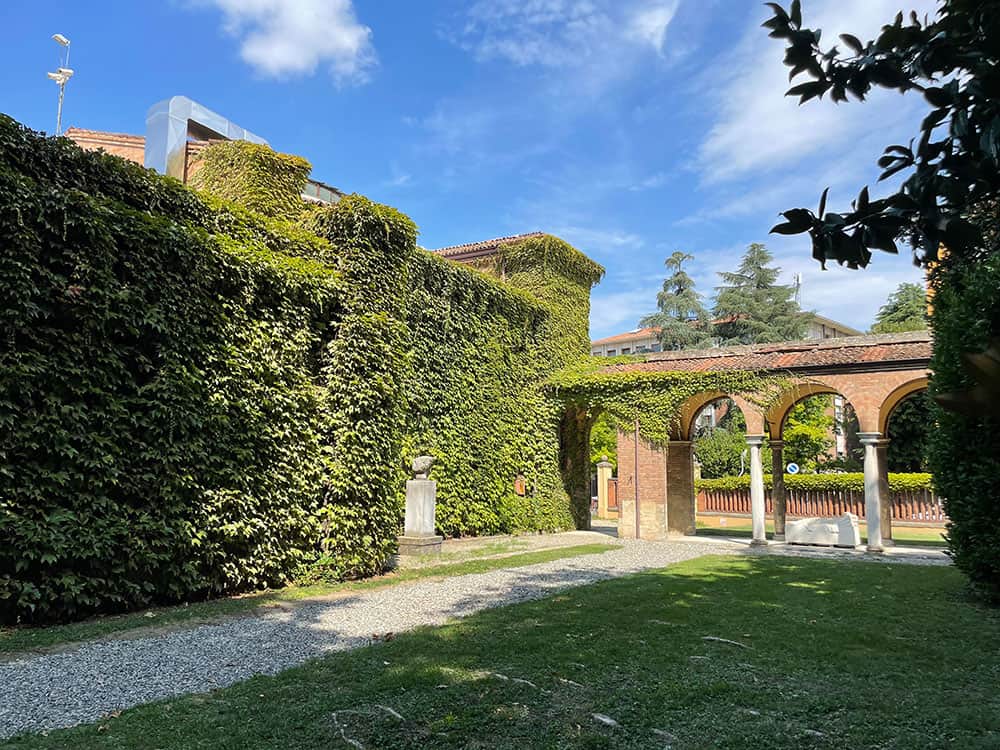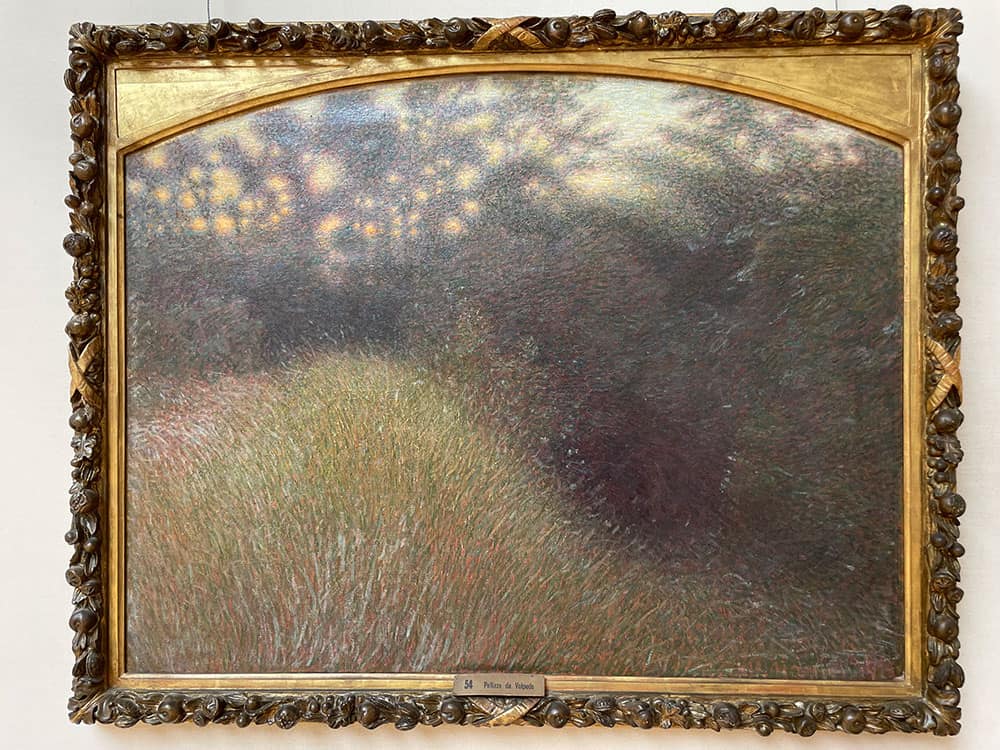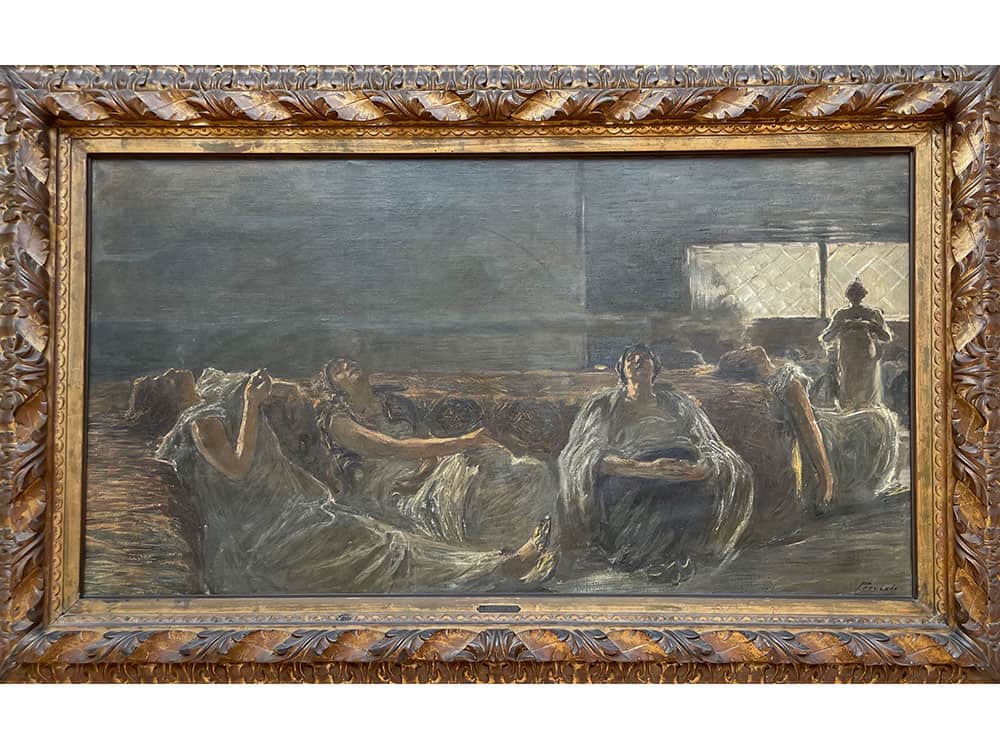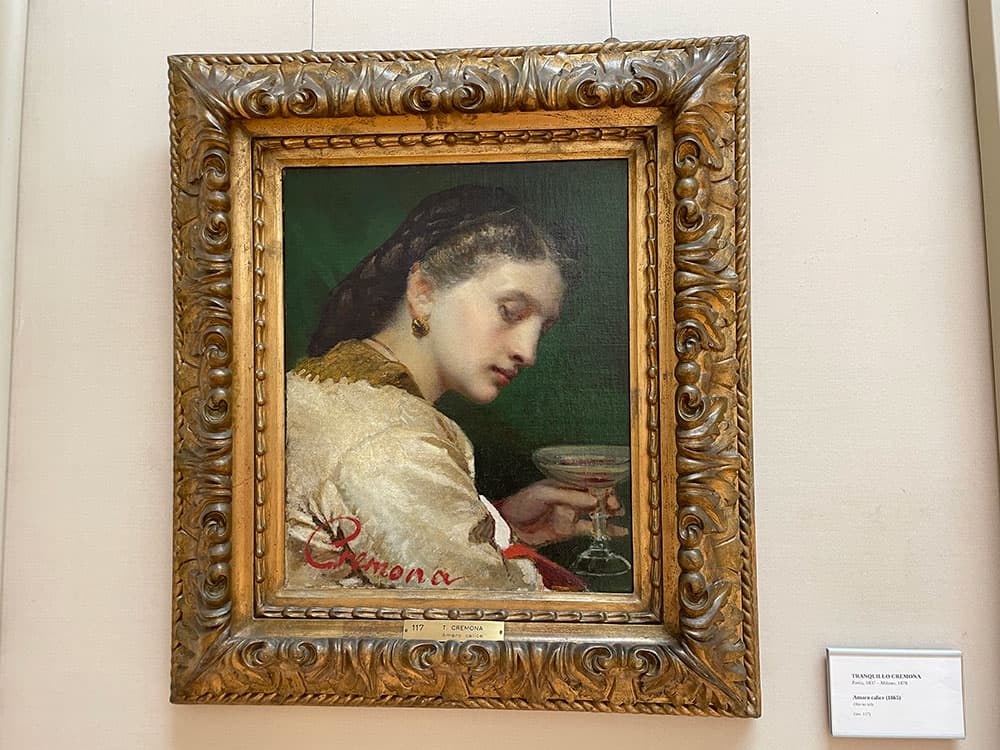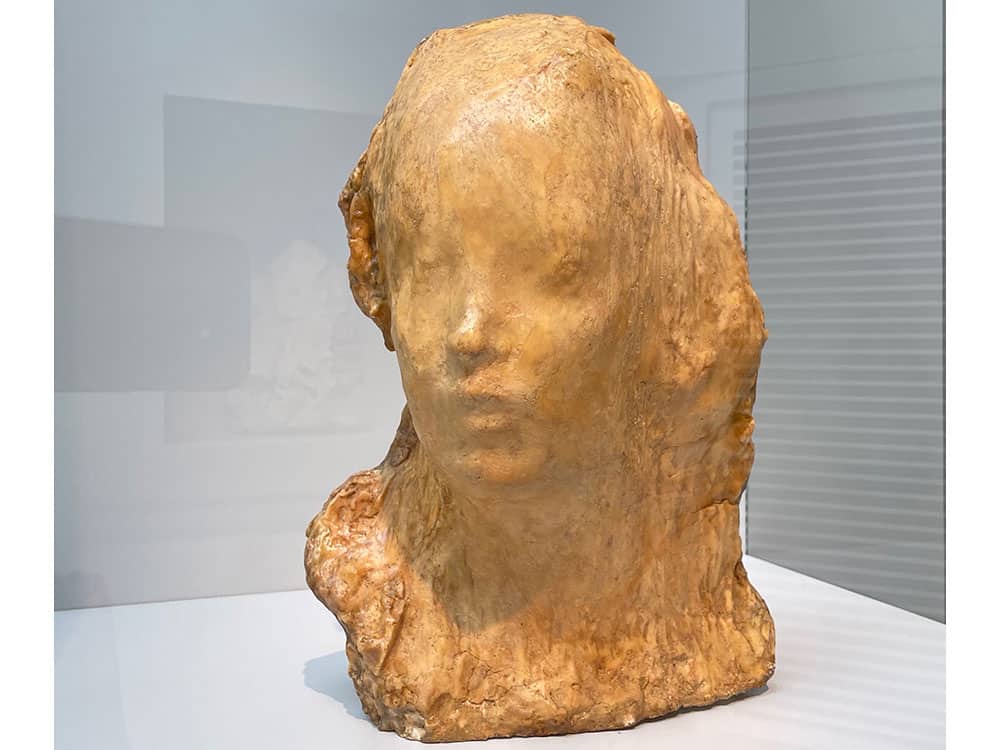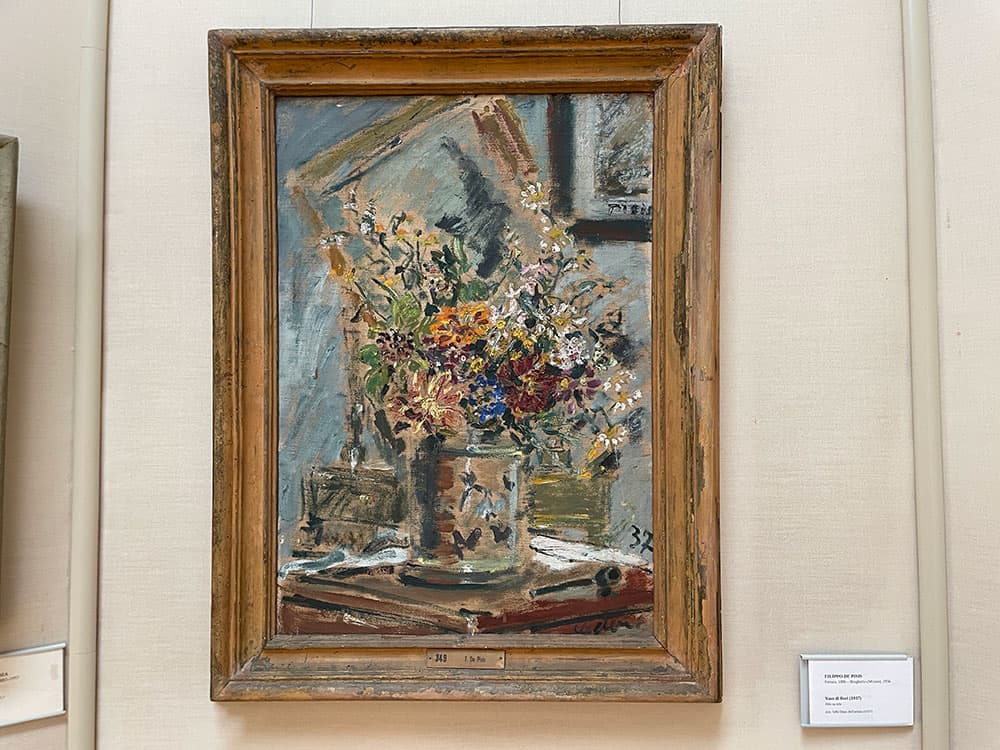Today we want to tell you a good story, a thriller with a happy ending involving an Emilian town (Piacenza), the theft of an important painting (Gustave Kilms “Portrait of a Lady”) and an intriguing mystery. The funny thing is that a few years ago, after our unforgettable visit to Palermo, we also covered a similar story, that unfortunately didn’t have a happy ending. I’m talking about the theft of Caravaggio’s nativity, stolen in the night between 17 and 18 October 1969 from the oratory of San Lorenzo never to be found again.
The story we relate today is truly incredible (sometimes I think that only in Italy things like that can happen and that the abundance of beauty we are surrounded by has gone to our heads) and actually contains not one but two twists and turns.
Let’s start from the beginning. We are in the mid-20s and a young gentleman from Piacenza, Giuseppe Ricci Oddi, passionate about Italian art of the nineteenth and early twentieth centuries, decides that it is time to find a proper location for his already considerable collection of artworks for this period.
After various searches, the Municipality of Piacenza offers him a very interesting space on the area of the pre-existing convent of San Siro of which only crumbling ruins remained.
When the project starts the residual parts of the former convent are connected to a new building where the actual gallery is going to be located, creating a beautiful interweaving of open spaces, porch filters and interior spaces.
Between the founding act of the gallery and its opening in 1931, Giuseppe Ricci Oddi continues to purchase artworks, keeping his research firmly limited to the field of Italian figurative art and avoiding the ostentation of the increasingly experimental avant-gardes that in those years were widely spreading out all over Europe; right during the construction years Giuseppe Ricci Oddi is induced by a friend to buy from the Scopinich art gallery in Milan the painting “Portrait of a Lady” by Gustave Klimt.
The first origins of this famous story surrounding this painting is revealed by a student from Piacenza who in 1996 notice the extraordinary similarity between the lady portrait and another painting by Klimt that was considered missing for years.
The young woman, after having visited the museum, combining the images of the two portrait, realizing that the faces of the two women represented were absolutely identical but while the one we are dealing with today has an uncovered head and a flowery blouse, the other one was wearing a large black hat and bare shoulders.
In short, the painting exhibited at the GAM (Galleria d’Arte Moderna Ricci Oddi) was subjected to X-rays which revealed the underlying painting: and here they found the lost painting! By the way with a virtual reality experience implemented in the gallery you can actually see hidden painting which a quite an extraordinary effect!!
Now let’s go forward to the next step: a year after the discovery of the double identity of the Lady in 1997, the portrait was stolen from the gallery and the police investigations came out to oncover nothing useful: the painting became the most important wanted artwork after the already mentioned Nativity in Palermo.
Some time ago a friend from Piacenza who deals with private security, and who for years has been following the Museum regarding this concern told us the story of the painting loss and absurd recovery. We found everything so extraordinary that we decided to go in person both for the pleasure of seeing a work of undisputed beauty and to investigate a bit about the implications of this paradoxical story. At the ticket office we found a very kind and prepared young man who introduced us to the path of the gallery and by our questions it turned out that he was the person that actually found the painting after 22 years of it’s disappearance.
Astounded, we had the whole story retold and we report it here just as it was told by him. Dario Gallinari, this is the name of the young man who had just started working at the museum, was checking the work of the gardeners who were intent on pruning a voluminous ivy in the external part of the gallery; the operation revealed a small iron door closing an empty space. Inside, the gardeners found a black garbage bag from which Dario extracted the painting that disappeared 22 years earlier, which was still preserved in perfect condition.
Excitedly, Dario runs to place the painting in safety inside the gallery and from that moment the press starts producing bizarre hypotheses regarding the mystery surrounding it’s disappearance.In spite of the police re-investigation no trace of the thief ever surfaced.
The clamor of this story has a persistent echo: from the day the painting was found, this gallery of a quiet provincial town becomes an object of curiosity and everyone wants to see the stolen painting that has miraculously reappeared. Thanks to the news stories, the desired exhibition space promoted by its founder Giuseppe Ricci Oddi with the dream of offering a prestigious place of beauty and culture to the citizens finally enjoys the fame it deserves and it’s visitors, who paid the tribute overly due to the Lady, can enjoy a considerable amount of beautiful works that otherwise would have risked not being sufficiently appreciated.
Inside the gallery you will find many authors of that artistic season, some well-known, others less, who in any case make up a very specific and very well selected collection. Here are some of my favorites to give you an idea: Pelizza da Volpedo (Sunset, beautiful), Gaetano Previati, Haschisch; the opium smokers, quiet Cremona, Amaro chalice, Medardo Rosso, Ecce puer, my beloved Filippo de Pisis (Vase of flowers), Adolf Wiltd (Giulia alberta Planet), Carlo Carrà (Guargnento), Francesco Messina (Four portraits) ……
We ourselves, having found the gallery closed years ago (probably because it was a Monday), decided to venture back, driven by the curiosity to see the painting linked to such a strange story and we like to think that it was her, the foreigner, the lady of the double painting, who hide for almost a quarter of a century in order to do justice to a talented man and an unjustly snubbed collection.
Here is how the discovery was followed on CBS News
Betti
[socialWarfare]

